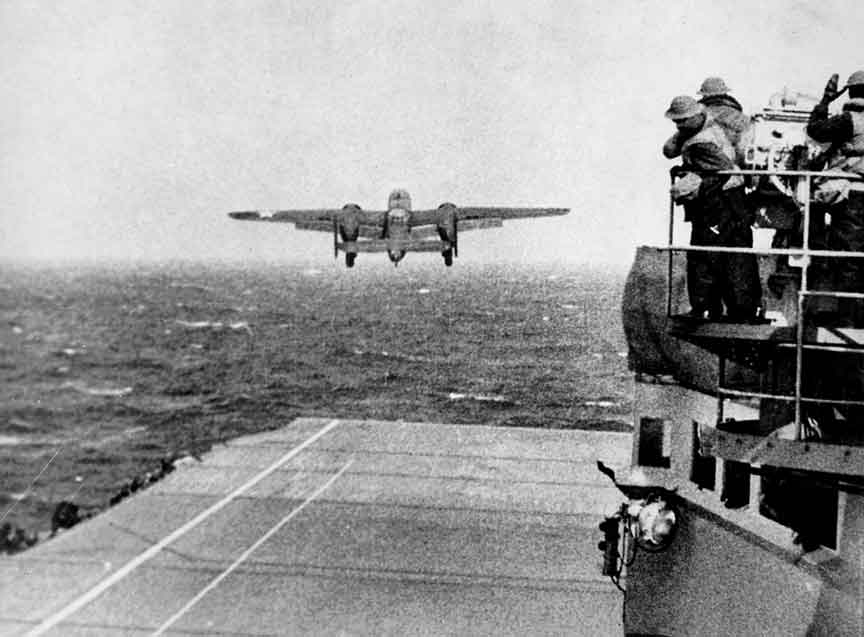April 1942 Doolittle's Bombers Attack Tokyo

Planes Taking Off the Hornet
On April 18, 1942, the United States achieved a significant psychological triumph when American bombers, led by General Doolittle, executed a daring bombing raid against Japan. These specially modified B-25 bombers were capable of taking off from the Aircraft Carrier Hornet, which was forced to launch the aircraft earlier than scheduled. Consequently, the aircraft lacked sufficient fuel to reach Chinese airfields. The crews of the planes parachuted out before exhausting their fuel reserves, resulting in the survival of all crew members except for three, who were captured and executed by the Japanese in China. Although the bombers did not cause substantial damage to the Japanese infrastructure, the raids provided a substantial psychological boost to the American public. Conversely, they had the opposite effect on the Japanese, causing a sudden sense of vulnerability..
Two weeks after the attack on Pearl Harbor, President Roosevelt expressed a desire to retaliate against Japan. The objectives were twofold: to bolster American morale and demonstrate the invulnerability of the Japanese. Navy Captain Francis Low, who reported to Admiral King, proposed the concept of employing medium bombers launched from aircraft carriers to strike Japan. After evaluating various alternatives, it was determined that the B-25, a newly developed medium bomber, possessed the capability to take off from carrier decks and maintain the necessary range to target Japan.
Lieutenant Colonel James “Jimmy” Doolittle, a seasoned test pilot, was entrusted with the responsibility of overseeing the project. Following the successful launch of two B-25s from a carrier, preparations commenced in earnest. Initially, 25 planes underwent modifications for the mission; however, only 16 were loaded onto the USS Hornet on April 1, 1942. The Hornet was subsequently joined by the USS Enterprise and three cruisers, all set to embark on their journey towards Japan.
At 7:38 a.m., while the Task Force remained 650 nautical miles from Japan, a Japanese patrol craft detected the aircraft. The vessel was subsequently sunk. Doolittle and Captain of the Hornet Marc Mitscher, recognizing the potential danger, opted to extend the aircraft’s launch radius by 200 miles. All 16 aircraft were successfully launched. Six hours later, the aircraft commenced their arrival over Japan. The planes dispersed into various targets, with one group responsible for bombing 10 military and industrial installations in Tokyo, two in Yokohama, and one each in Yokosuka, Nagoya, Kobe, and Osaka. Notably, none of the bombers were shot down. Due to the early launch, the aircraft lacked sufficient fuel to reach their planned destination. Consequently, all were forced to ditch or parachute onto the Japanese mainland. One aircraft was diverted to Russia, and its crew was held captive for a year. All but ten of the remaining crew members managed to reach Chinese lines. Tragically, three crew members perished during the ditch. Eight were captured by the Japanese and subjected to trial. Two were executed, while others were imprisoned for the duration of the war.
The raid achieved remarkable success. Although it did not result in the destruction of substantial military assets, it had a profound impact on Japanese morale, compelling the Japanese to divert resources to defend their home islands. In the United States, the raid provided a much-needed morale boost and elevated Doolittle to the status of a hero.
 >
>